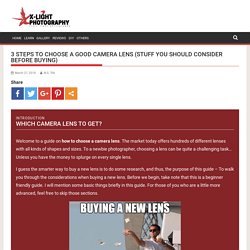

How to Bounce a Flash: Professional Guide. So… you get pretty good results shooting in natural light, but every time you use your flash, you suck.

Washed out faces and dark backgrounds, yuck! You know it’s time to master flash lighting, but who can afford expensive studio lights, soft boxes, backgrounds, etc.? Three Speedlights Used: 105mm lens, F7.1 x 1/200 sec., ISO 400, WB 6000K. 3 speedlights bounced off of 3 white plastic 4’ x 4’ DIY reflectors attached to 3 walls of the baby’s bedroom. One is behind the camera, one left and one right of camera, slightly behind the baby. You don’t need all that stuff to get professional results. Bouncing light usually softens it. One On-Camera Speedlight Used: 150mm lens, F5.6 x 1/100 sec., ISO 400, WB 6000K. This article demonstrates the following techniques: Bouncing one speedlightBouncing multiple speedlightsLight modification and controlLighting in tight quartersCreating a lighting ratioDragging the shutter. How to Bounce a Flash: Professional Guide. DSLR Photo Tip: What The Heck Is Back Button Focus? Today’s DSLR photo tip continues with our series of tips covering functions on your camera that you’re most likely not using.

Let’s talk about back button focusing. Normally, to focus on a subject, we pick the focal point we want, then depress the shutter button halfway. This sets the auto focus (and the exposure, if you aren’t using manual mode). Then we recompose the shot so that the focal point is where we want it in the frame and depress the button the rest of the way to fire the shutter. Most of the time, this is OK. “Focus” captured by PictureSocial member Joseph Asbery. DSLR Photo Tip: What The Heck Is Back Button Focus? Aperture Priority vs. Shutter Priority. The many modes modern cameras can shoot in can sometimes overwhelm their owner.

When setting up to take a picture, many DSLR users will use either Aperture Priority or Shutter Priority. Both shooting modes are great for specific scenarios. I’m going to help you figure out where you should apply them. First, what is aperture and what is shutter Speed? I could (and will) write a whole article on each of these items, but for now let’s just keep it simple. Aperture Aperture is essentially the size of the optic opening. The human eye has its own built in aperture in the form of pupils. Conversely, when the outside environment is dark, your pupil dilates (opens) to allow as much visible light in as possible in any given time interval. On your camera, there’s more to aperture than just the amount of light hitting your sensor.
Shutter Speed Shutter speed refers to the length of time that you actually take the picture for. Aperture Priority vs. Shutter Priority. How to Pose so You Don't Look Fat in Photos. How to Pose so You Don't Look Fat in Photos. Sue Bryce: How to Photograph Different Body Types. Sue Bryce: How to Photograph Different Body Types. Camera Metering: How the Heck it Works - X-Light Photography. Welcome to a beginner’s guide on camera metering, and this is going to be another short one.

Ever wonder how modern cameras automatically “know” how to take photos that are not too bright or too dark? The answer will be, through a series of built-in (light) metering sensors. Camera Metering: How the Heck it Works - X-Light Photography. Photography Composition Rules: In-depth Guide for Great Photos - X-Light Photography. How do you make photos look good?

Just by applying photography composition rules, the basics and experimenting. Yep. That’s what a professional photographer told me when I just got started, and it really is that simple. Some of you guys might think photography as an art that needs a lot of raw talent to go far, but nope. Not really. I picked up photography for fun, I learned the basics, and before I know it, friends around me are liking my photos. All you need is really play with some of these composition rules, and let’s get on with the basics.
Let us start with composition rules, for they are the easiest to learn and apply. Simply put – apply rule X, compose your photo this way, and it will (probably) look better. How to use: Draw 4 lines and break your frame into equal thirds. How it helps: When you place your subject on the gird, the rule of thirds will supposedly help you to balance the weight of elements. Photography Composition Rules: In-depth Guide for Great Photos - X-Light Photography. Free Beginners Guide to Photography Basics - X-Light Photography. Free Beginners Guide to Photography Basics - X-Light Photography. Photography Lens Filters: Full Guide and The Essentials - X-Light Photography.
In this guide, I will introduce a long list of photography lens filters that I think every photographer should have, and make recommendations of the cheap fantastic that I have used before.

Add some spice to your photography without burning a hole in the wallet. Why not? But as I wrote this guide somewhat “for the newbies”, I have included some very basic things about lens filters. So feel free to skip through those sections if you are already an advanced photo ninja. Disclaimer: This guide includes some extremely Photoshopped example photos to illustrate the effects of the filters.
Photography Lens Filters: Full Guide and The Essentials - X-Light Photography. Camera Autofocus: The Complete Guide - X-Light Photography. In this part of the photography beginner series, we shall understand more on camera autofocus.

I am sure that some beginners might be thinking “what’s there to learn about autofocus, isn’t it automatic”? Well no. Camera Autofocus: The Complete Guide - X-Light Photography. Camera Metering: How the Heck it Works - X-Light Photography. Camera Metering: How the Heck it Works - X-Light Photography. Solving The Mystery of Exposure Triangle: From Auto to Manual - X-Light Photography.
Welcome beginner photo ninja, to this guide on solving the mystery of what is exposure triangle in photography.

I understand, most people can’t wait to snap away with their new cameras – But just can’t get things right with photos that are too bright or too dark. That was how I was as a beginner too, and I figured that the basics are necessary for epic photos. I then looked at many tutorials online, and the exposure triangle was the first thing to pop out. It sounds difficult at first, but in fact, it only took me 15 minutes of reading to learn all about it. As it turns out, exposure simply means “exposing the camera’s sensor to light when you take a picture”. For the triangle part, it is referring 3 “elements” that controls how your photo looks – aperture, shutter speed, and ISO. I read your mind – Just what in the world are aperture, shutter speed, and ISO? White Balance: The Basics - X-Light Photography. Welcome to a beginner’s guide on white balance.

3 Steps to Choose a Good Camera Lens (Stuff You Should Consider Before Buying) Welcome to a guide on how to choose a camera lens.

The market today offers hundreds of different lenses with all kinds of shapes and sizes. To a newbie photographer, choosing a lens can be quite a challenging task… Unless you have the money to splurge on every single lens. 13 Types of Camera Lenses (And Their Uses) Welcome to a guide on the different types of camera lenses. Camera lenses have evolved quite a lot over the years, and people who are new to the photography are going to get a nasty surprise when it comes to lenses.
On top of various different types of lenses, there are quite a lot of technical terms and photography lingo that is not really easy to understand. Which is the purpose of this guide, to compress the different kinds of lenses into one place, and explain a few of those terms in simple language. This is a small section dedicated to the complete beginners – Feel free to skip these if you already know.
But for those of you don’t – No need to worry. The number one thing that everyone who is interested in photography should know. Aperture is a commonly confused term for beginners. The aperture size is measured in f-stops or f-number (e.g. f/1.4, f/2.8, f/4, f/22, etc…). Now that you know the 2 common terms, you should be able to read those cryptic numbers in front of the lenses.
9 Types of Lens Filters (and Why They Are Important) In this guide, I will introduce a long list of different types of photography lens filters that I think every photographer should have, and make recommendations of the cheap fantastics that I have used before. Add some spice to your photography without burning a hole in the wallet.
Why not? But as this guide is somewhat “meant for the newbies”, I have also included some very basic things about lens filters. Feel free to skip through those sections if you are already an advanced photo ninja. 13 Types of Cameras (That You Should Know) - X-Light Photography. Welcome to guide on the different types of cameras. While photography is not an ancient technology, it has progressed a lot within just one century. Today, there are so many different kinds of cameras that most beginners will be lost without an introduction. So here it is, a quick introduction to not just the digital cameras, but also the vintage analog ones.
Quick, hide your wallets! I am an affiliate partner of Google, eBay, Adobe, Bluehost, and more. Nah. Photography Burst Mode Explained (What It Is and How to Use) - X-Light Photography. Welcome to a beginner’s guide on camera burst mode, and this will be a fast and furious one. In this guide, we will be touching on a rather cool feature called burst shots, or otherwise sometimes known as continuous shots. We will touch on what it is and how to use it – For photographing the fast-moving subjects. Quick, hide your wallets! I am an affiliate partner of Google, eBay, Adobe, Bluehost, Clickbank, and more. There are affiliate links and advertisements throughout this website. Nah.